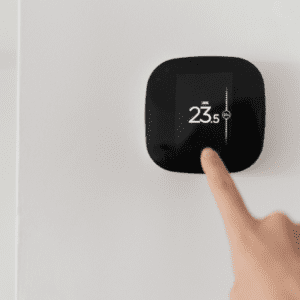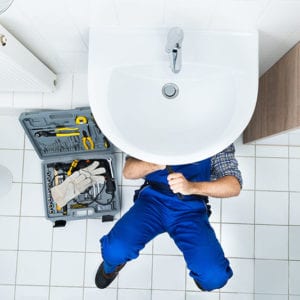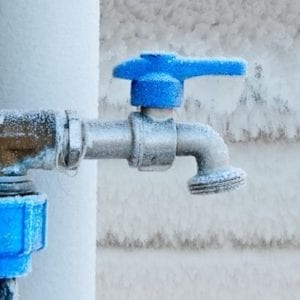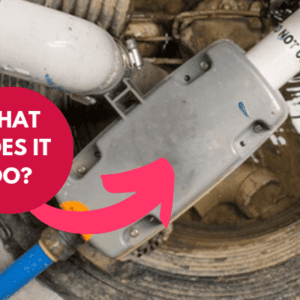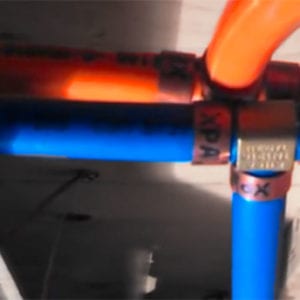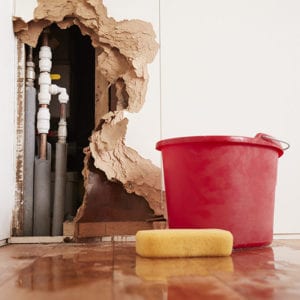After January 9, 2020, you can no longer get compensation for the cost of replacing defective Kitec plumbing. You will have to pay out of pocket, which could easily amount to several thousand dollars down the drain.
But there is still time to make sure you get reimbursed for having these faulty pipes removed from your home. The sooner you act, the less you risk having to open your wallet later.
If you want to talk to our certified technician immediately you can call this number: 647-952-2012. Continue reading to learn everything you need to know about Kitec Plumbing.
You know those bright, blue and orange pipes running from your water heater? Bad news: those colourful water lines could be a flood waiting to happen…and the time to replace them is quickly running out.
Kitec plumbing systems, which were recalled due to defects back in 2005, were installed in hundreds of thousands of homes across Canada – including many thousands here in the Greater Toronto Area.
Depending on the size of your house, the cost to replace defective Kitec plumbing could range in the thousands to tens of thousands of dollars.
Kitec is not an issue to take lightly, but don’t panic. There are several ways you can recoup the cost of replacing Kitec in your home through your insurance company, plumbing installer, or the ongoing Kitec class action lawsuit.
We’ll help you understand everything you need to know about Kitec systems in your home, including how to join the Kitec class action lawsuit.
- Quick Facts About Kitec
- What is Kitec Plumbing?
- How Do I Know if There’s Kitec Plumbing in My Home?
- How Much Does It Cost to Replace Kitec Plumbing?
- Can I Be Compensated For Kitec Plumbing in Canada?
Quick Facts About Kitec
- Installed as plumbing and heating piping in Canada and the United States between 1995 and 2007.
- Identified by a bright blue or orange colour and the label ASTM 1281.
- Sold under the brand names Kitec, PlumbBetter, IPEX AQUA, WarmRite, Kitec XPA, AmbioComfort, XPA, KERR Controls, Plomberie Améliorée.
- Recalled in 2005 due to failure of pipes and fittings, costing millions of homeowners thousands of dollars in catastrophic water damage.
- Cost to replace Kitec plumbing depends mainly on the size of the house but typically costs upward of $2,000.
- Homeowners with Kitec installations are entitled to get money from a $125 million settlement but time to claim that money is running out. You can join a class action lawsuit against the manufacturer IPEX. The deadline to join is January 9, 2020.
What Is Kitec Plumbing?
Kitec was the “go-to” pipe used in plumbing and heating installations between 1995 and 2007. It was manufactured by a company called IPEX Inc. which still exists to this day.
Kitec is a composite plumbing material made from five layers of metal, plastics and resin adhesives, with brass fittings.
The outermost plastic layer is usually colour-coded to indicate hot water (bright orange) or cold water (bright blue). The label ‘ASTM 1281’ is printed on the outer layer in black lettering.
Starting in the late 1990s, Kitec was marketed as a cost-effective alternative to copper pipe that was also much easier to install. IPEX Inc. and its distributor sold Kitec plumbing under the names Kitec, PlumbBetter, IPEX AQUA, WarmRite, Kitec XPA, AmbioComfort, XPA, KERR Controls, Plomberie Améliorée.
Kitec caught on big time. And why not? It was cheap, simple, and at first appeared to work just as well as traditional copper piping.
Of course, it wasn’t long before things started to go south.
Homeowners across Canada and the United States began to report numerous problems with Kitec pipes:
- Despite layers of protective plastic and resin, both the aluminum layer of the pipes and the brass fittings had a tendency to corrode quickly.
- Kitec fittings contained very high levels of zinc, which reacted with the chemical composition of Kitec and leached minerals into the pipe. This caused the fittings to degrade quickly and a build up of zinc oxide that restricted the flow of water.
- The plastic and aluminum layers expanded and contracted with temperature changes, weakening over time until the pipe burst.
These defective pipes caused millions of dollars in damage in a very short period of time. Not only did people have to pay hundreds or thousands of dollars to have their pipes replaced, but many were also left with extensive water damage, structural deficiencies, electrical problems and black mould.
In 2005, Kitec plumbing was recalled across North America. Unfortunately, some plumbing and heating contractors continued to install Kitec plumbing for years afterward, so there are homes built as recently as 2007 which contain Kitec.
Many contractors and homeowners have been proactive in removing Kitec plumbing before it inevitably fails. There’s no telling exactly how many people live in homes that still use Kitec today…and unfortunately, many of them don’t even realize it’s a flood just waiting to happen.
Don’t wait until it’s too late. Talk to a licenced and certified plumber about having your Kitec plumbing replaced now while there’s still time to claim compensation for your trouble.
How Do I Know if There’s Kitec Plumbing in My Home?
Although Kitec pipes were sold under many names, they almost all have a few things in common that makes Kitec relatively easy to identify:
- Colour. Most Kitec pipes are either bright orange or bright blue. Ironically, this was originally one of its selling points, since it helped people distinguish their hot and cold water lines. Now, it helps us know which pipes need to go.
- Number. The label ‘ASTM 1281’is printed on the outer layer of Kitec pipes.
- Age. Knowing when the pipes were installed is also helpful, since most installations occurred during or after 1997 and no later than 2007.
One easy way to tell if your home has Kitec plumbing is to look at the pipes leading from your water heater. You can also check under your kitchen and bathroom sinks.
If you’re still not sure whether your home has Kitec, the best thing to do is to call a plumber now.
How Much Does it Cost to Replace Kitec Plumbing?
The cost to replace Kitec plumbing in Ontario really depends on the size of your house.
It’s difficult to pin down the cost of an ‘average’ Kitec replacement job because Kitec was installed in so many different types of homes: bungalows, townhouses, multi-story homes, and many, many condominiums.
Given such a wide range of possibilities, we’re reluctant to provide a concrete estimate without knowing anything about your home. However, we can say that it often costs upward of $2,000. If you don’t submit a claim before January 9, 2020, you will need to pay these costs out of pocket.
Understand that even if your Kitec plumbing has not caused problems yet, you cannot count on it to last. Many thousands of homeowners have made that mistake and paid dearly for it.
Contact us now for fast answers to any questions you have about replacing Kitec.
Can I Be Compensated For Kitec Plumbing in Canada?
If there is Kitec installed in your home (or did before you had it replaced) you may be able to receive some compensation to help cover the cost of replacing your Kitec pipes if you act as soon as possible.
Your potential avenues for compensation include:
- The class-action lawsuit against IPEX Inc.
- Home insurance coverage
- Your plumbing contractor
Please know that the following is provided for general information purposes only and does not constitute legal or professional advice. You should contact your legal counsel for advice on any specific legal issues and speak to a licensed and certified plumber regarding the Kitec plumbing in your home.
1. Join the Kitec Class Action Lawsuit
In 2012, the manufacturer of Kitec plumbing, IPEX Inc., entered into a class action lawsuit settlement for $125 million.
As part of this settlement, IPEX paid into a monetary fund will eventually be paid out to compensate homeowners and others who who had Kitec installations.
Homeowners in Canada who make a claim before January 2020 are eligible for 50% of the average cost to repair or replace Kitec piping and fittings.
To join the Kitec class action lawsuit:
- Visit the Kitec Settlement website. This site is run by the law firm representing the claimants.
- Find out if you are eligible to make a claim.
- Follow the instructions on the site to request and complete a claim form.
Unfortunately, even if you are eligible, there’s no way of knowing how much money you can or will receive from this settlement. Since there is a limited amount in the settlement fund, the amount that each claimant receives will depend on the number of claimants in total.
The deadline to file a claim is January 2020. Contact us to book your Kitec plumbing replacement today.
2. Make a Home Insurance Claim
Depending on the terms of your home insurance policy, you may be covered in the event of a flood caused by burst or leaking Kitec piping in your home.
Some home insurers have been willing to cover all or part of the cost to replace Kitec piping to avoid having to eventually pay out a claim for water damage.
However, this is not true of all home insurers.
Some insurers, when informed that your home has Kitec, will require that you replace it in order to keep your coverage…but not cover the cost of that replacement. Others will increase your insurance premiums if you do not have the Kitec plumbing replaced yourself.
In any case, it’s important to familiarize yourself with what your home insurance does and doesn’t cover when it comes to water damage.
3. Reach Out to Your Plumbing Contractor
When Kitec was recalled back in 2005, contractors who had installed Kitec were required to inform people of the recall.
If your contractor never bothered to inform you, they could be on the hook for the cost of replacing it.
However, since many homes with Kitec were purchased and sold before the recall, it’s not always easy to track down the contractor and hold them responsible.
What to Do If Your Home Has Kitec Plumbing
The first step will be to confirm that your home does, in fact, have Kitec. A licensed and certified plumber can do that in no time.
Next, you’ll want to have the plumbing assessed for any immediate risks. This will help you figure out the timeline for replacement and whether it is worth making interim repairs.
In the meantime, it’s also imperative that you know exactly how to turn off your water main in the event of a burst pipe. This is something we think every homeowner should know, but when you’re dealing with Kitec, you cannot take any chances.
You don’t have to deal with this alone. If you have any questions about Kitec piping and how it affects you, call us at 647-952-2012 or reach out to us online by filling out the form below.
Learn More About Kitec Plumbing Today
We’ll respond to your request within 2 hours during regular business hours. For emergency service, please call 647-952-2012.


